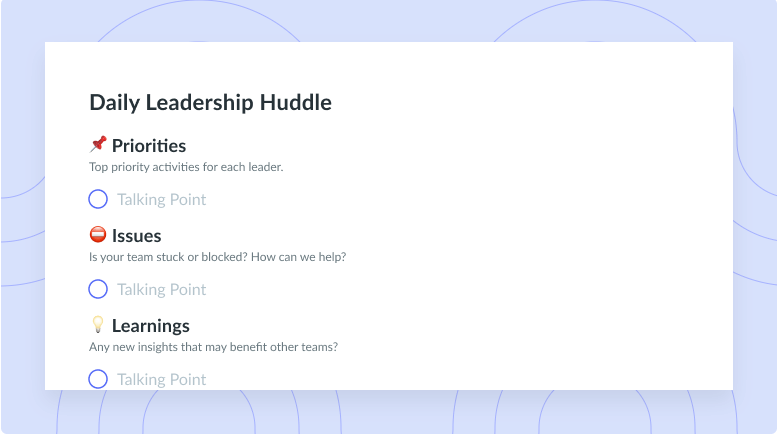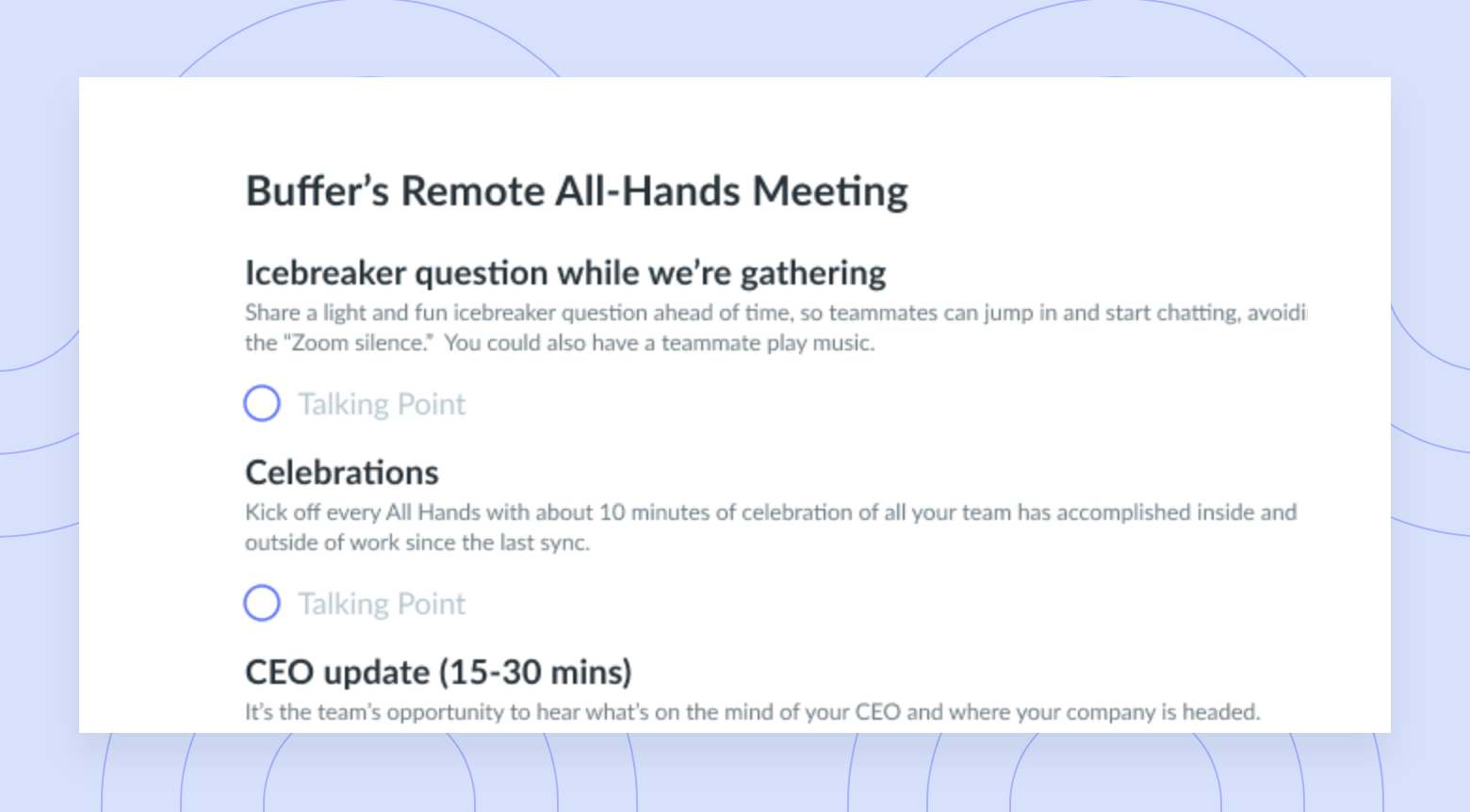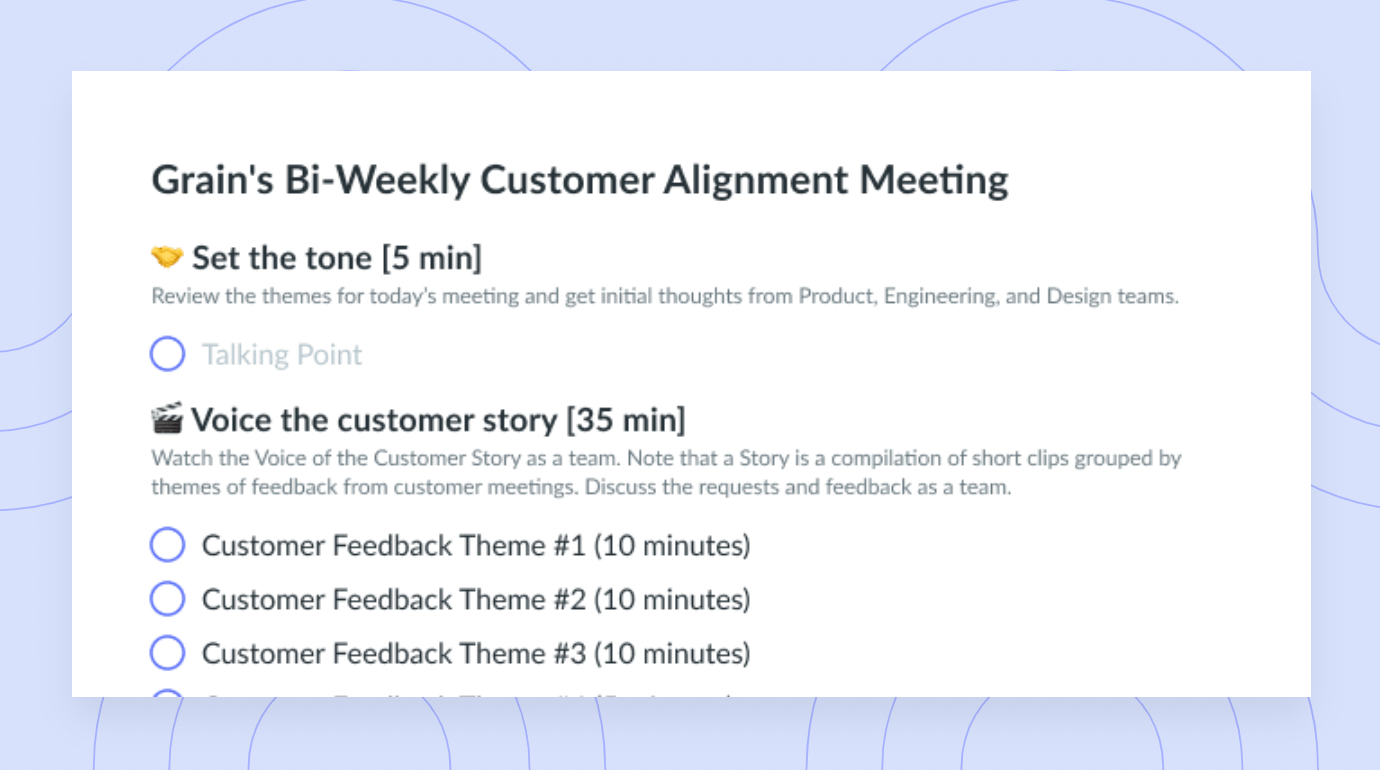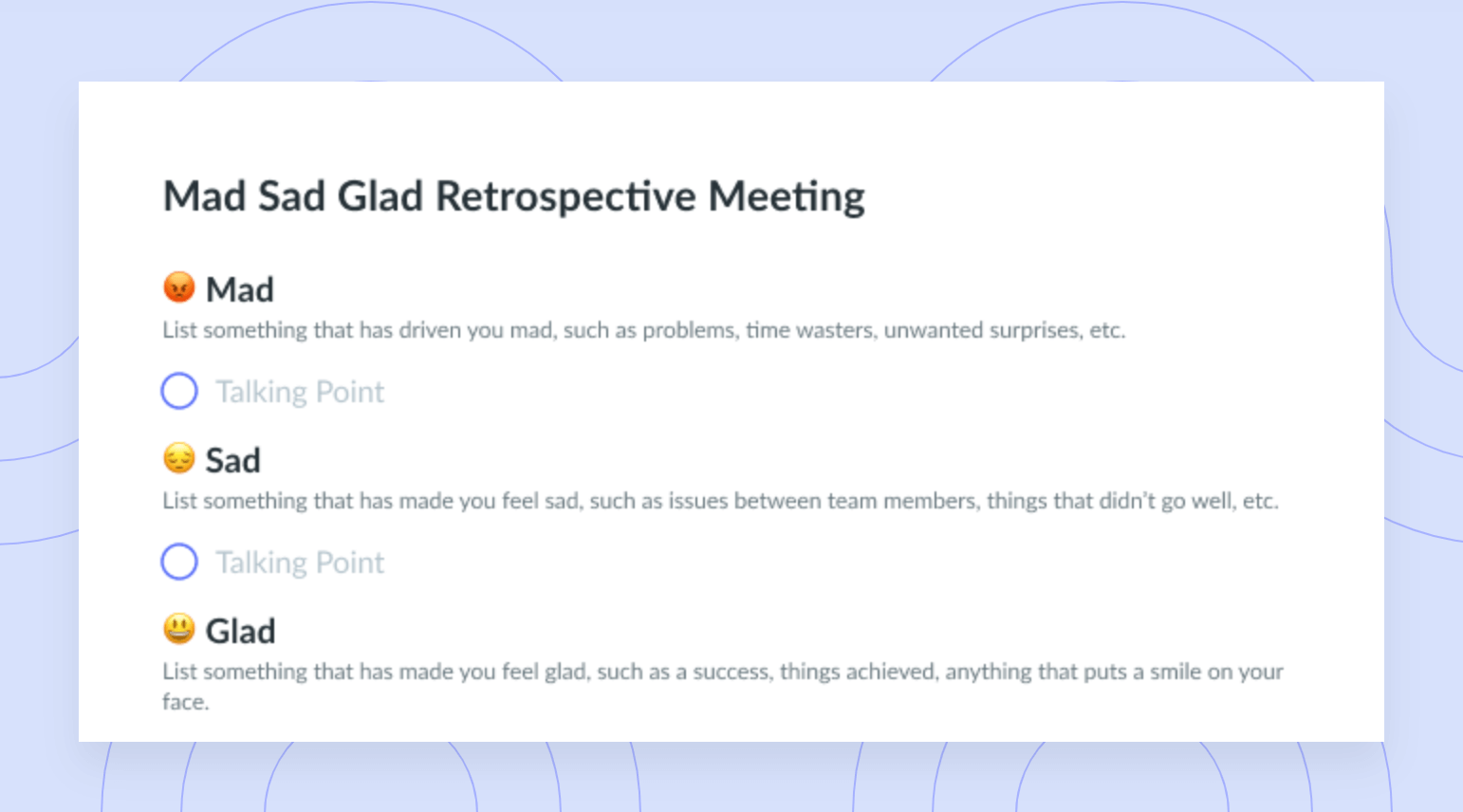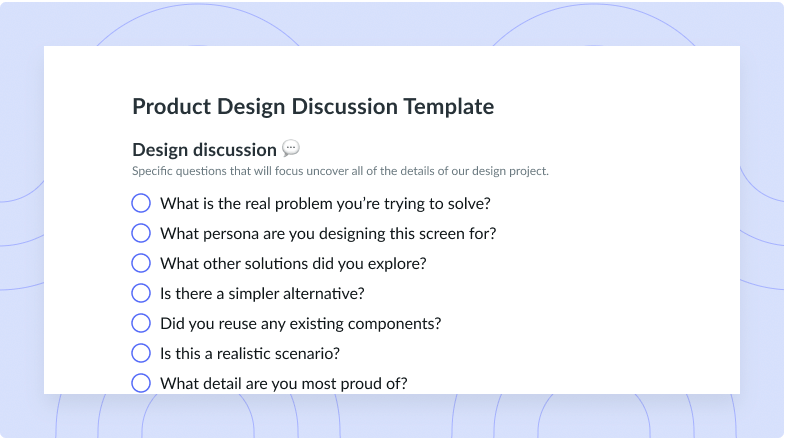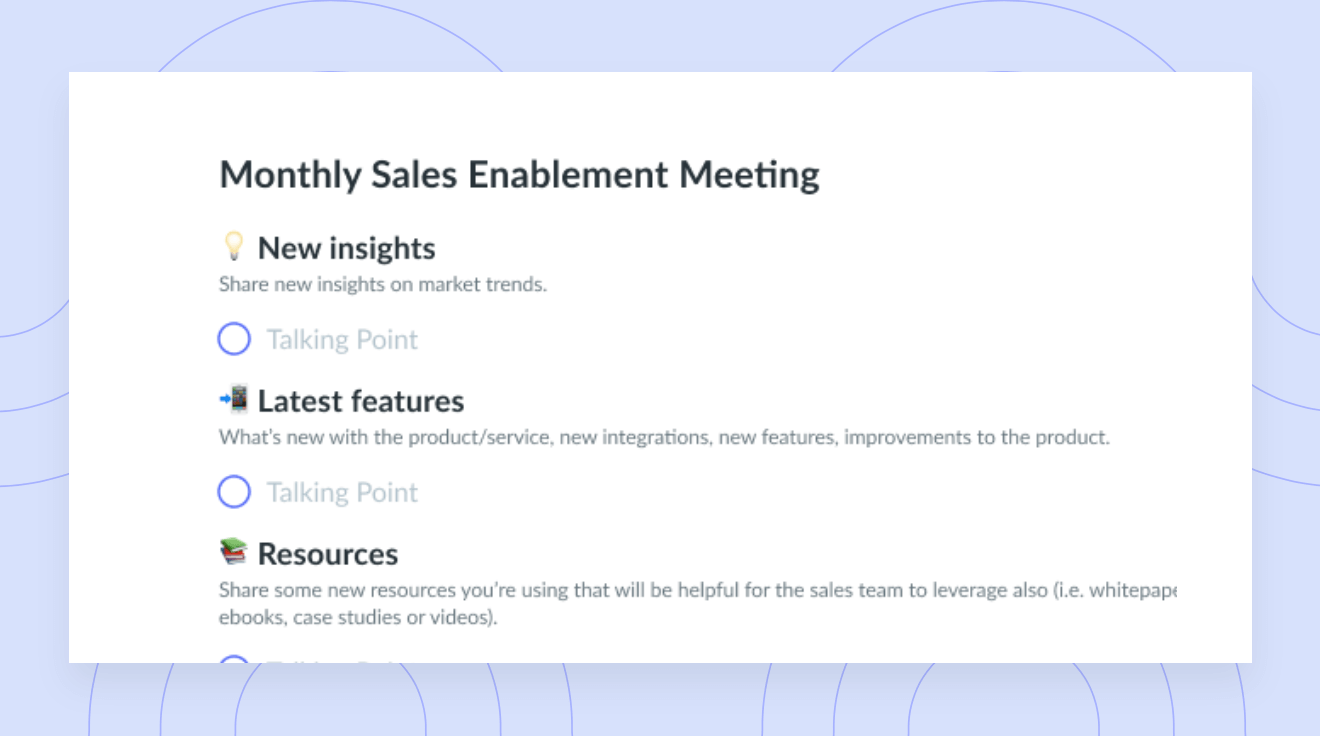Hybrid Meeting 101: How To Make This Meeting Variant Work
Get the best of both worlds with hybrid meetings. Plus, discover 10 tips to make hybrid meetings productive and efficient.
Hybrid meetings benefit from the pros of both in-person and remote meetings. They offer flexibility for attendees, who get to choose between face-to-face or remote communication, while still fostering productivity and efficiency.
Although hybrid meetings can come with certain challenges, learning these 10 tips will help everyone overcome these challenges and have the best of both worlds! So, keep reading to discover 10 tips to level-up hybrid meetings…
Benefits of a hybrid meeting
1 Improves engagement
Hybrid meetings improve engagement by letting employees participate in meetings regardless of their location. Hybrid meetings have both remote and in-person employees participating, and this flexibility enhances engagement. Since employees can choose which format (remote or in-person) they best thrive in, they’re likely to be happier and more productive.
According to Sue Bingham, Harvard Business Review contributor, managers can ask specific questions to understand which environment their employees thrive in as both a person and a worker:
“To uncover employees’ motivations, managers might ask:
- What are your goals for your career’s near term and long term? What could stand in your way?
- What makes you feel valued at work?
- What do you wish you could spend less time doing?
- What business processes could we update to create efficiency?
- What tools or processes help you feel included and engaged?
To uncover employees’ needs, managers might ask:
- Where do you feel you are the most productive: at the office headquarters, in a ‘third place’ like a coffee shop with your co-workers, working from home, or when working across a combination of locations?
- What work schedules best support your overall well-being?
- What tools do you need to perform your job well?”

Equal Playing Field
Include everyone in the meeting, regardless of where they are located, by having a meeting agenda that is collaborative and accessible to all attendees. Try a tool like Fellow!
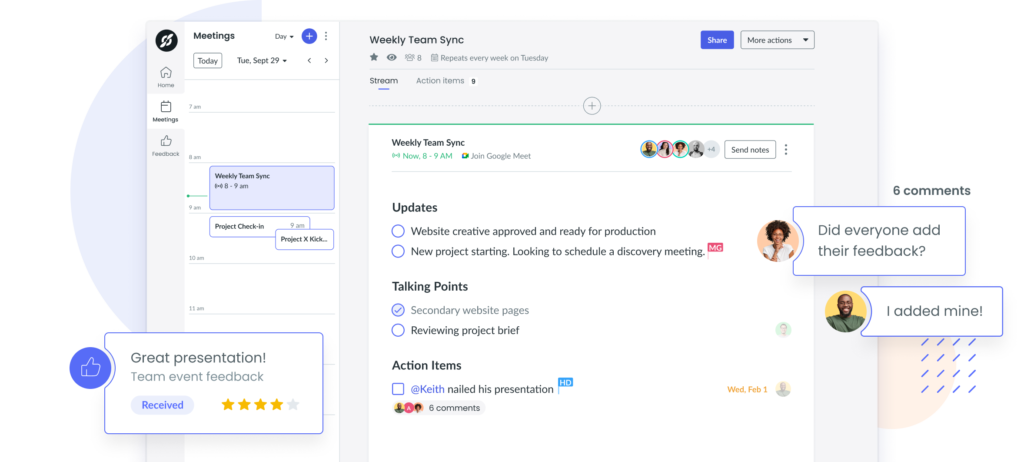
2 Optimizes inclusion
There is no “one way” of doing something, and an inclusive work environment accepts a variety of approaches. Optimizing inclusion means accepting virtual and in-person employees and offering them equal benefits and rewards, regardless of their working preferences.
3 Fosters flexibility
According to The Wall Street Journal, 95% of surveyed people said they want flexible hours. Hybrid meetings allow employees more flexibility by limiting travel time and gas or public transit costs. Additionally, hybrid meetings allow employees to work from home or come into the office, letting them choose the location that fits their preferences.
Also, according to The Wall Street Journal, “72% of workers who weren’t happy with their level of flexibility—whether time or location—are likely to seek out a new opportunity in the next year.” So, offering hybrid workplace flexibility will also help companies retain happy employees.
4 Allows the option to record and rewatch
Employees can’t always make their meetings. Whether they’re off sick or out of the office, the employee has the option to record hybrid meetings. Then, whenever the employee is available, they can rewatch the recording to make sure they’re up to speed on what was discussed. This is also useful for employees to rewatch meetings for which they forgot to take meeting minutes, and for team members that didn’t want to or couldn’t attend.
10 tips to make hybrid meetings work:
- Design the agenda with all participants in mind
- Start the meeting on time
- Use a conference room with a large screen
- Enable the chat function
- Test the technology in advance
- Give equal focus to all attendees
- Provide strong facilitation
- Ask for employee feedback
- Pay attention to time zones
- Don’t have a “meeting after the meeting”
1 Design the agenda with all participants in mind
When designing a meeting agenda for a hybrid meeting, it’s important to design it with all the participants in mind. For instance, if the agenda includes icebreakers, avoid questions like “what is one thing around you that’s meaningful?” because remote employees will have more things around their home to use as a show and tell than the employees sitting in a boardroom will.
Additionally, it can be difficult to ensure that all voices are heard in hybrid meetings. However, using a collaborative tool like Fellow allows attendees to work on the same agenda together so each team member is heard no matter how they’re joining the meeting.
2 Start the meeting on time
Starting any meeting on time shows respect for attendees’ time. However, this is especially crucial for hybrid meetings, because people participate both remotely and face to face. If the meeting starts late, the in-person employees will know this because the host won’t be in the room yet, so the in-person employees may also take their time joining. However, the remote employees will be sitting online waiting for the host to start the meeting, unsure of what’s happening. So, to have an effective hybrid meeting, it’s important to start the meeting on time.
3 Use a conference room with a large screen
One of the struggles with hybrid meetings is seeing everyone’s faces. Remote employees are on a small screen and in-person employees are scattered in a boardroom, making it very difficult to hear and see one another. And when people can’t hear or see whoever is talking, it’s more challenging to stay engaged and follow what they’re saying. So, use a conference room with a large screen so everyone in the office can see and hear each other.
For example, to accommodate a hybrid workplace model, Google created meeting spaces where each remote employee is visible on their own screen, and in-person employees are across from the on-screen employees in a circular office space. This setup ensures that all employees can hear and see each other, which in turn fosters an inclusive and productive meeting.
4 Enable the chat function
Another struggle with hybrid meetings is nonverbal cues from attendees. It’s hard to read nonverbal cues signaling that someone wants to speak when there’s a mix of in-person and remote employees. It’s important to enable the chat function so everyone can participate and have equal visibility regardless of whether they are present in the meeting room or tuning in remotely.
5 Test the technology in advance
Nothing is worse than malfunctioning technology. During hybrid meetings, technology needs to be working well so remote attendees can clearly hear and see everything going on in the office. If they can’t, this will make them feel excluded and unimportant. It’s also important that remote employees have good technology so the in-person employees can hear and see them. Remember to do an audio, camera, and internet check before the meeting begins so the time allotted to the meeting isn’t wasted trying to solve technical issues.
6 Give equal focus to all attendees
It can be easy to forget about remote attendees in hybrid meetings, because people get carried away in face-to-face conversations. However, focusing on some attendees more than others results in an unproductive and unfair meeting. Therefore, it’s essential to give equal focus to all attendees, both virtual and in person.
Here are a few tips for giving equal focus during hybrid meetings:
- Situate in-person attendees in a position where all attendees can see each other
- Provide opportunities for both in-person and virtual attendees to speak
- Regularly monitor the virtual chat
- Use the raised hand feature on video conferencing tools to signal when remote attendees want to talk
7 Provide strong facilitation
According to Stacey Hanke, author of Influence Redefined… Be the Leader You Were Meant to Be, Monday to Monday, there are 10 ways to facilitate good hybrid meetings:
- Don’t over-invite
- Prepare ahead of time
- Provide an agenda
- Keep meetings short
- Open Zoom early
- Establish ground rules
- Leverage technology
- Control the conversation
- Check in
- End strongly
“Hybrid meetings are challenging enough to facilitate. By over-inviting attendees, your listeners will struggle to hear everyone speaking or even participate.”
– Hanke.
8 Ask for employee feedback
One of the best ways to improve something is by asking for feedback from the affected people. So, after each hybrid meeting, ask meeting attendees what they liked and disliked about the meeting and what they would suggest for improvement. Or, if the team is more reserved, make an anonymous questionnaire to get more honest answers.
With Fellow, users can click on the feedback tab on the left-hand side of their page and then click “Create” to create a feedback request about a meeting. Once users hit “Ask about a meeting,” they can add respondents, a subject, and their questions. If they don’t want to add their own questions, they can also click “Browse templates” to provide a series of meeting feedback templates to use.
9 Pay attention to time zones
When planning a hybrid meeting, remember that remote employees may be in different time zones. For instance, if someone schedules a 10:00 am meeting in Ottawa, it would be 7:00 am in Vancouver, which might be outside some employees’ work hours. So, be mindful of where the meeting’s virtual attendees are located to ensure that hybrid meetings accommodate everyone.
10 Don’t have a “meeting after the meeting”
Everyone’s experienced the “meeting after the meeting” –when attendees talk about the meeting after it’s happened as a “debrief.” While there’s nothing wrong with doing this in an in-person workplace, in hybrid workplaces having further discussion about the meeting once it has ended excludes virtual attendees because they aren’t able to participate.
So, make sure that meeting attendees avoid the “meeting after the meeting.” One way to prevent this is by sending the meeting minutes immediately after the meeting is finished so that any comments or questions can be asked to the group via email or other messaging platforms.
Parting advice
Hybrid meetings are the best of both worlds. They encompass the pros of both in-person and remote meetings and keep employees happy by giving them a choice of what working format they prefer. While hybrid meetings can pose their own challenges (like technical difficulties or the inability to hear and see everyone), following the above tips will help employees run a productive and efficient hybrid meeting!








![Marketing Meeting 101: This Is How to Run It Successfully [+ Free Templates]](https://fellow.app/wp-content/uploads/2022/06/Marketing-Meeting.jpg)
